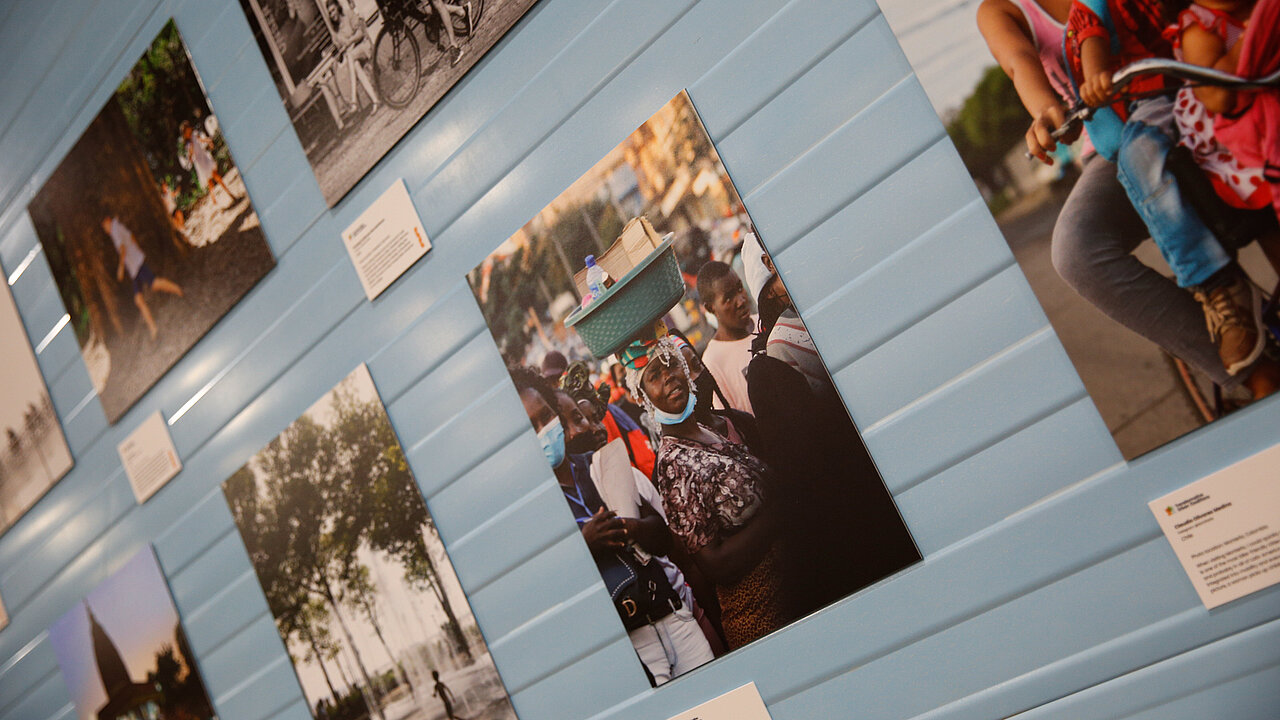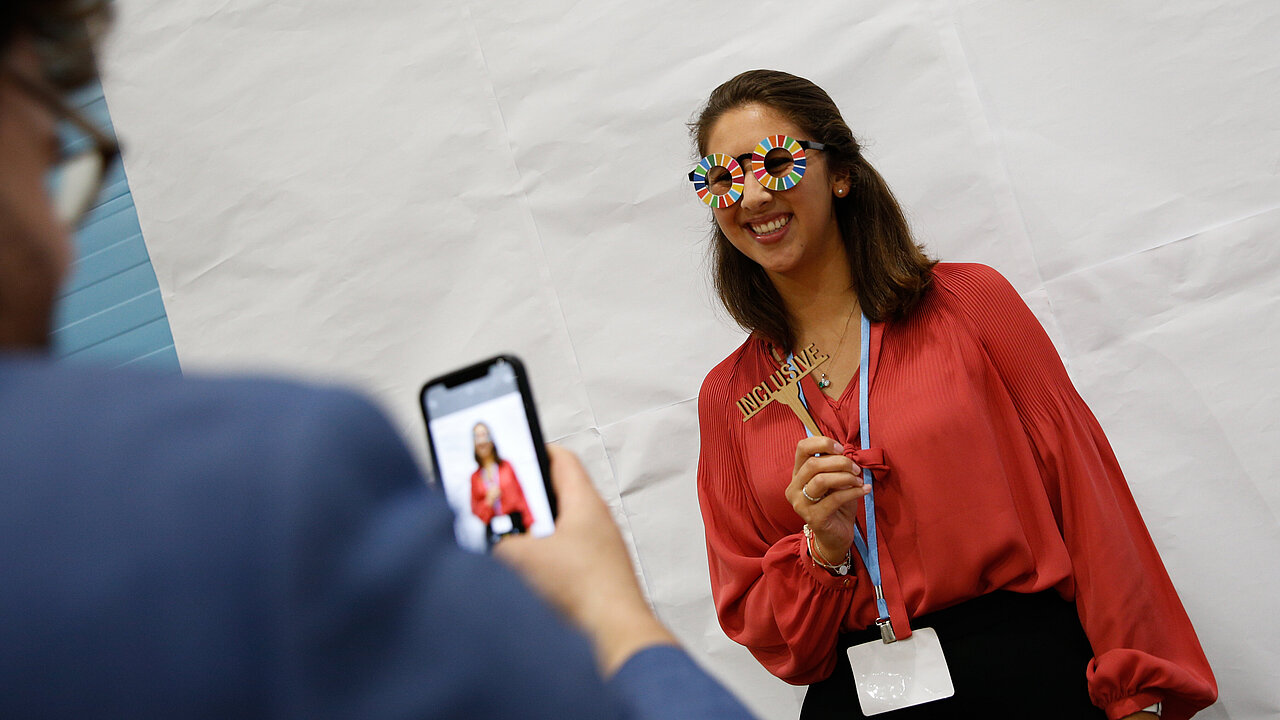
A picture is worth a thousand words, and dozens of photographers from diverse backgrounds captured scenes portraying their visions of a desirable and more sustainable city at COP27. Submissions to the Transformative Urban Coalitions photo competition were made by people from ages 15 to 60, coming from 24 different countries. They captured urban life in 32 countries across five continents.
An international jury, including Oscar-winning filmmaker and photographer Mathilde Bonnefoy and Oscar-winning filmmaker and producer Dirk Wilutzky assessed the photos on several criteria. These included appropriateness to the contest theme, storytelling impact, creativity and originality and composition. “I am touched by the variety of worlds that reveal themselves thanks to this contest,” said Mathilde Bonnefoy, editor and director, known for movies such as Run Lola Run, Citizenfour and The International.
The best 18 photos from the competition, supported by the German Government International Climate Initiative (IKI), were exhibited at the Capacity-Building Hub at COP27 in Sharm El Sheikh, Egypt.
From green and beautiful to creative and resilient, the visions presented have different features. Their work reflects the challenges and opportunities we face in transforming our cities into desirable places. The featured photographers also capture everyday moments from around the world showing at once the tremendous diversity of cities and common themes.
1st Place Winner: Lagos, Nigeria, by Okechukwu Samuel

In their own words: “My vision of a desirable city would be a city that is inclusive… where the people and the government work hand-in-hand.”
2nd Place Winner: Kolkata, India, by Avijit Ghosh

In their own words: “I imagine future cities will be more self-reliant in terms of food production… Cities have to be more sustainably designed; [then] people will be more involved in practices like urban and peri-urban agriculture so that we can keep the balance in food supply and demand. I [also] imagine future cities will be more reliant on renewable energy, shifting from fossil fuels so that we can cut emissions…and reduce and deaccelerate the impacts of climate change.”
3rd Place Winner: Kolkata, India, by Sudip Maiti

In their own words: “A sustainable city, to me, is one that provides ample access to nature [with] all the basic facilities in proximity. I hope desirable cities will grow on the map and future generations will live in a sustainable and productive way.”
Evaluating Regional and Demographic Differences
Besides yielding impressive images and visions of the future, the competition also had a research component, following the Transformative Urban Coalitions’ research and communication approach. An analysis of the photos and author’s explanations shed light on universal features and patterns of desirable and sustainable cities.
“We were able to look at different urban areas from around the world through the eyes of the contestants, showing inspiring cases of how to make our cities better,” said Angélica Vesga, interim executive director of WRI México and Colombia, a project partner.
Overall, a total of 131 unique keywords were identified that could be clustered into groups. Most addressed features like solar power and sustainable buildings, nature and green areas, and the importance of reducing impacts from disasters like floods. Furthermore, aesthetic aspects mattered to the contestants, which was clear through their descriptions of areas captured as beautiful or charming. The most used keywords were “green,” “beautiful,” “safe,” “creative” and “resilient.”
Results also showed nuances between continents. The most used keywords from Africa described urban features as “beautiful,” “clean” and “inclusive,” whereas the Americas’ top keywords were “green,” “inclusive” and “modern.” In Asia it was “green,” “beautiful,” “safe”; and Europe showed a stronger focus on mobility with words like “bicycle,” “green” and “public transport.”
Interestingly, differences were also found between genders. While female contestants named community, justice and safety aspects more, men focused on mobility and urban features.

The Cities We Want
“The results show what people appreciate about cities,” said Simone Sandholz, Head of the Urban Futures and Sustainability Transformation (FAST) programme at the United Nations University – Institute for Environment and Human Security. “They indicate that most do not only want their city to function, but also to serve as a home, as something beautiful and enabling. Simultaneously, it highlights existing challenges and potential solutions on the local scale, from urban agriculture to recycling to community engagement.”
Apart from displaying the outcomes of the contest, the COP27 exhibition also collected further data by asking attendees their opinions on these questions.
If we are to create the “cities we want,” we must be critical of the current way of doing things. The participants looked at aspects of cities that often go unnoticed and how we as humans and inhabitants interact with our physical and natural environments, ultimately creating communities.
A version of this article originally appeared on international-climate-initiative.com.
Arianna Flores-Corral is a Communications Analyst with United Nations University’s Institute for Environment and Human Security (UNU-EHS).
Simone Sandholz is Academic Officer and Head of the Urban Futures and Sustainability Transformation (FAST) Programme.








